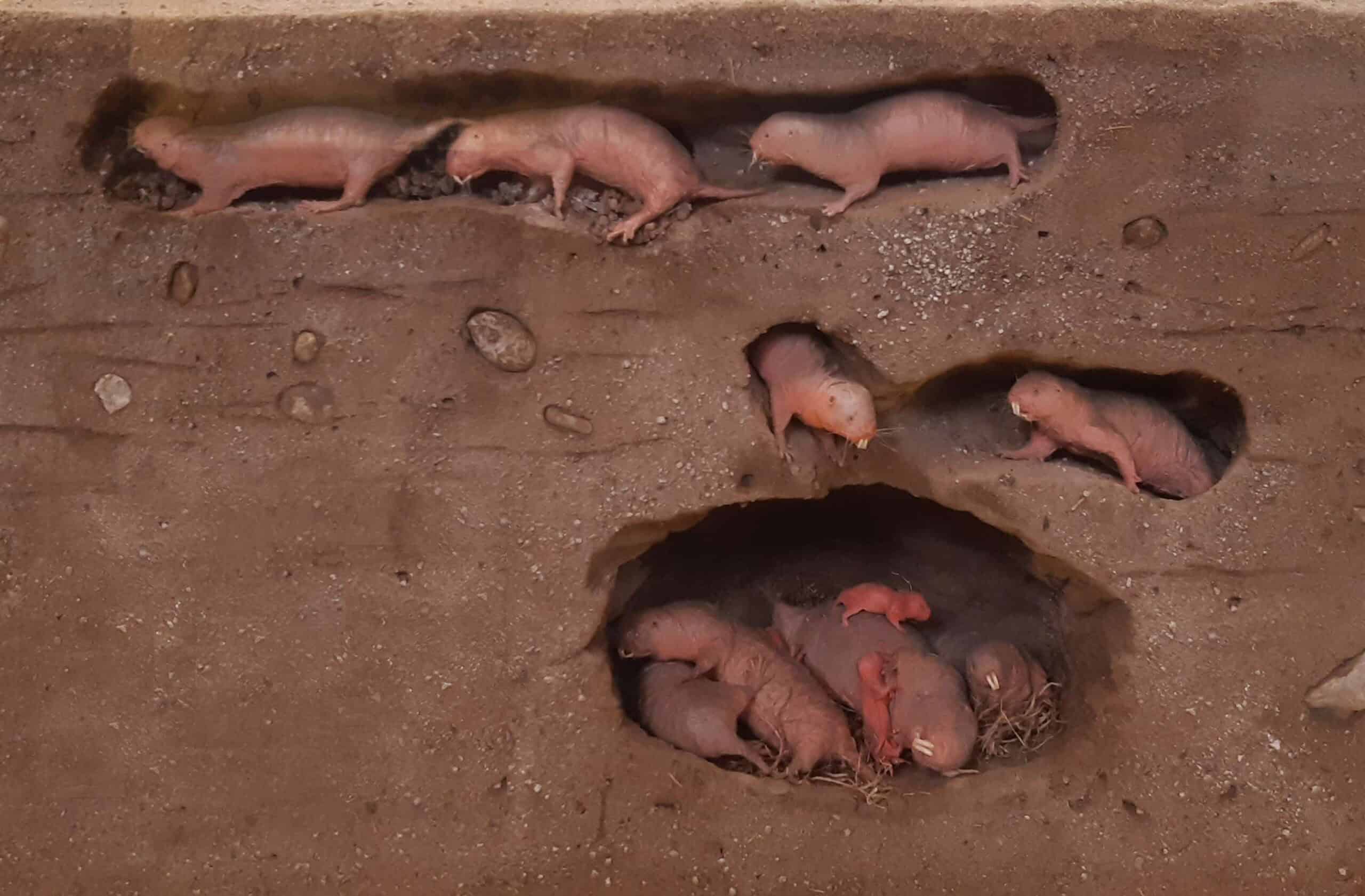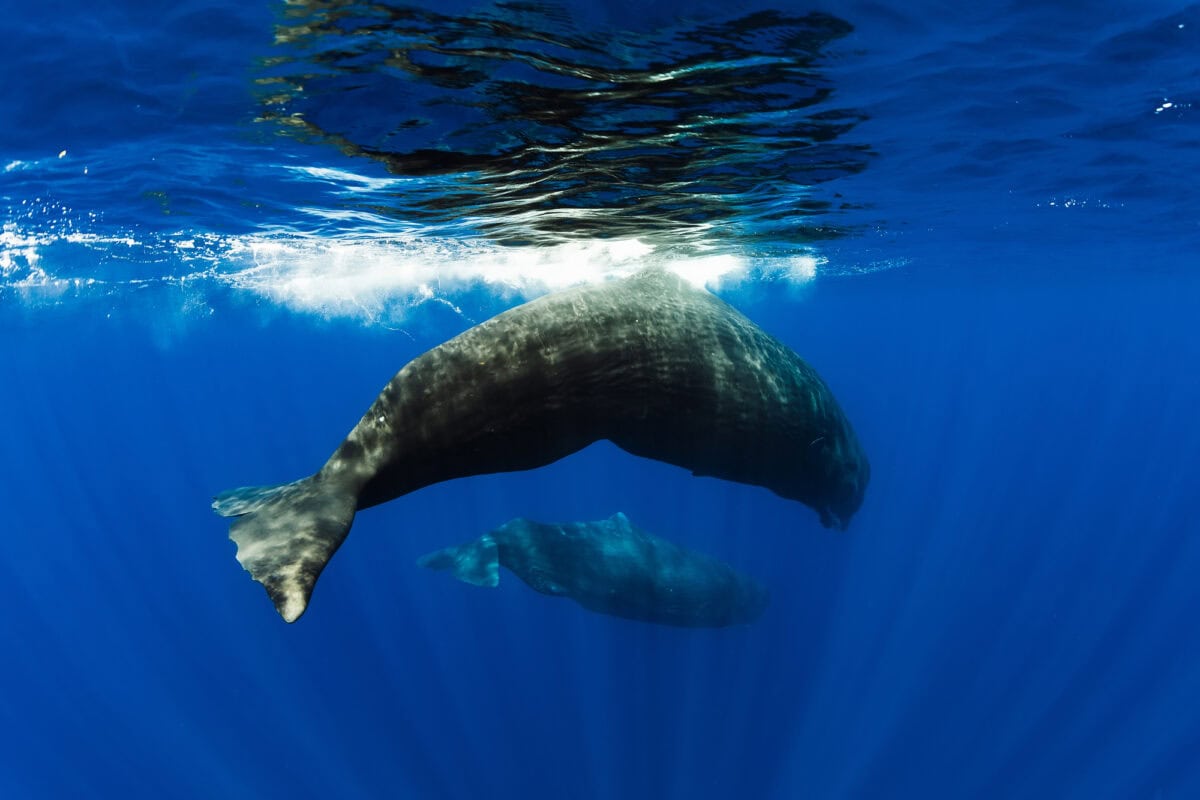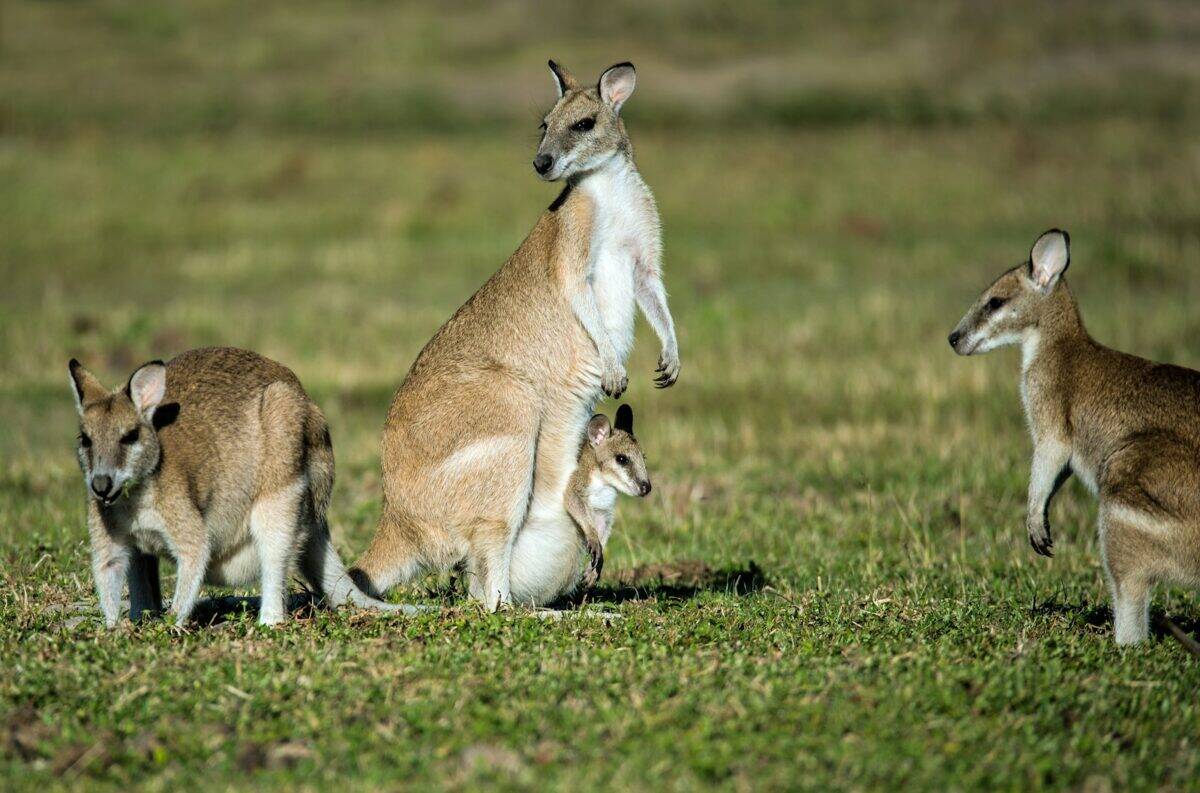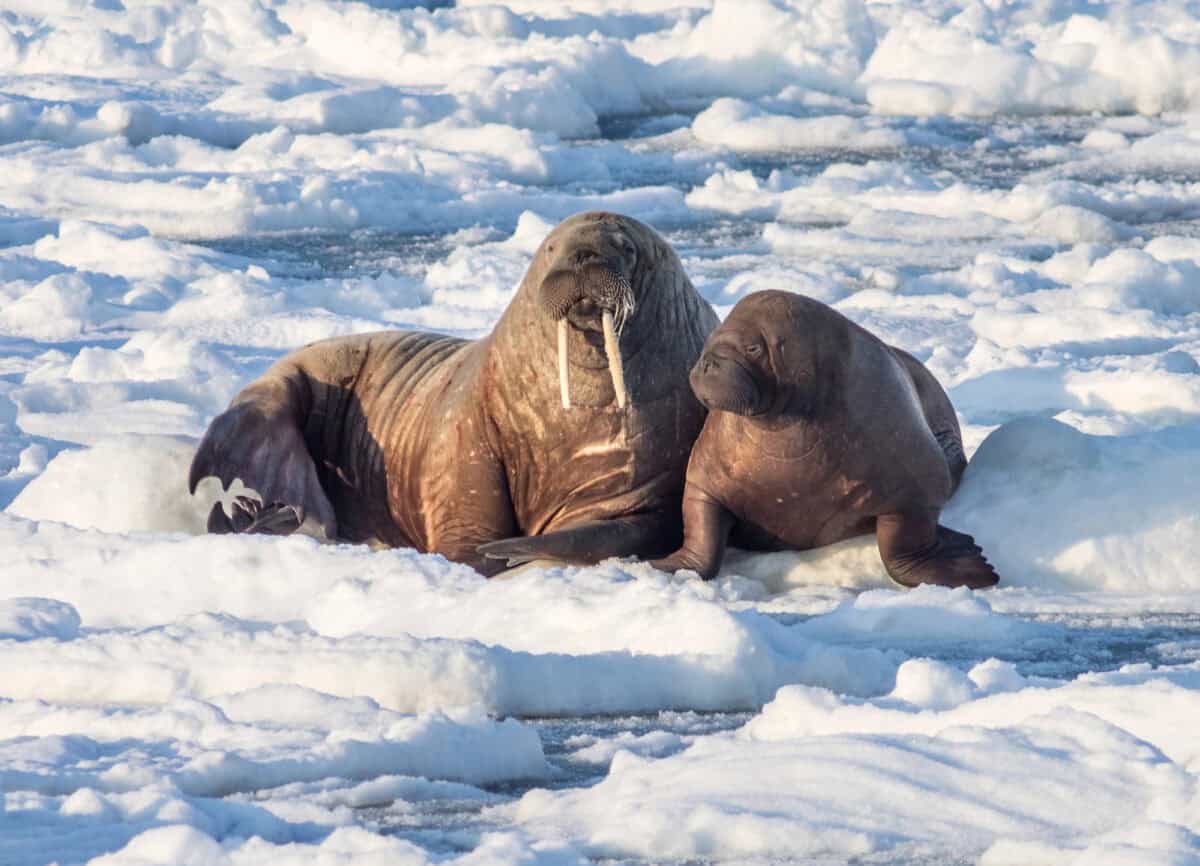In the animal kingdom, growth patterns vary dramatically across species. While most mammals reach a predetermined adult size and stop growing, a fascinating subset continues to grow throughout their lives. This phenomenon, known as indeterminate growth, is relatively rare among mammals but occurs in several remarkable species. From ocean giants to burrowing rodents, these creatures defy conventional growth limitations through unique biological adaptations. This article explores 13 mammalian species that never truly stop growing, examining the scientific mechanisms behind their continuous development and the evolutionary advantages this trait provides.
Understanding Indeterminate Growth in Mammals

Indeterminate growth refers to the biological pattern where an organism continues to increase in size throughout its lifespan, rather than reaching a genetically predetermined adult size. While this growth pattern is common in fish, reptiles, and amphibians, it’s relatively unusual among mammals. In most cases, mammals display determinate growth—reaching adult size and then stopping. When mammals exhibit indeterminate growth, it typically manifests as continuous, albeit slow, increases in body mass, skeletal size, or specific organs rather than proportional growth of the entire body. This growth is governed by complex hormonal systems, environmental factors, and genetic predispositions that keep cellular division and tissue expansion active beyond typical maturation periods. Understanding these extraordinary growth patterns provides valuable insights into mammalian biology and evolutionary adaptations.
The Blue Whale Earth’s Largest Growing Mammal

The blue whale (Balaenoptera musculus) stands as the most dramatic example of continuous growth among mammals. As the largest animal ever known to exist on Earth, blue whales can reach lengths of up to 100 feet (30 meters) and weights exceeding 200 tons. What makes their growth pattern remarkable is that blue whales continue to increase in size, albeit slowly, throughout their 80-90 year lifespan. This continuous growth is supported by their filter-feeding lifestyle, which allows them to consume up to 4 tons of krill daily. Their baleen plates—the filtering structures they use for feeding—also continue to grow and renew throughout their lives. While growth slows considerably after reaching sexual maturity at around 10 years of age, subtle increases in body mass and length continue, making them true giants of indeterminate growth in the mammalian world.
African Elephants Lifelong Growth in Gentle Giants

African elephants (Loxodonta africana) demonstrate one of the most visible examples of continuous growth among land mammals. These magnificent creatures can live up to 70 years in the wild and continue growing throughout their lives. Their most dramatic growth occurs in the first 15-20 years, but subtle increases in size persist afterward. Adult males can reach heights of 13 feet (4 meters) at the shoulder and weigh up to 6-7 tons. Perhaps most notably, their tusks—which are actually modified incisors—grow continuously throughout their lives at a rate of approximately 7 inches (17 cm) per year. This endless growth is necessary as the tusks wear down through use. Similarly, their molars are replaced throughout their lifetime, with new teeth moving forward to replace worn ones. This remarkable adaptation allows elephants to process the enormous quantities of vegetation they consume daily, which can reach 300-600 pounds (136-272 kg) for a fully-grown individual.
Naked Mole-Rats Underground Growers with Remarkable Longevity

The naked mole-rat (Heterocephalus glaber) might seem an unlikely candidate for this list, but these unusual rodents display truly extraordinary growth patterns. Unlike most rodents, which live brief lives of 2-3 years, naked mole-rats can live for more than 30 years—a remarkable lifespan that accompanies their continuous growth. Their skeletal structure never completely stops developing, with subtle increases in size occurring throughout their lives. Even more intriguing is their queen’s ability to elongate her spine when she becomes the colony’s reproductive female, physically stretching to make room for offspring. This adaptation allows her to produce larger litters. Additionally, naked mole-rats continuously grow their incisors throughout their lives, which they use for digging tunnels in their complex underground colonies. These teeth grow at a rate of approximately 2 mm per week, counterbalancing the wear from constant tunneling activities. This species represents one of the most fascinating examples of adaptation-driven continuous growth among mammals.
Beavers Engineers with Ever-Growing Incisors

Beavers (Castor canadensis and Castor fiber) are remarkable examples of mammals with specialized continuous growth. While their overall body size eventually stabilizes, their signature incisors never stop growing throughout their 10-15 year lifespan. These specialized teeth grow at an astonishing rate of about 4 inches (10 cm) per year. This continuous growth is a crucial adaptation that compensates for the extreme wear their teeth endure from constant wood-cutting activities. The distinctive orange color of beaver incisors comes from iron-rich enamel on the front surface, which provides exceptional hardness for cutting through wood. The softer dentin behind wears away faster, naturally maintaining a sharp, chisel-like edge. This specialized dental growth allows beavers to maintain their role as ecosystem engineers, constructing elaborate dams and lodges that create wetland habitats beneficial to countless other species. Without this continuous dental growth, beavers would be unable to sustain their wood-cutting lifestyle and their transformative impact on aquatic ecosystems.
Sperm Whales Deep-Diving Giants with Expanding Heads

Sperm whales (Physeter macrocephalus) display one of the most unique growth patterns among mammals, particularly in their distinctive block-shaped heads. These marine giants can reach lengths of up to 60 feet (18 meters) and weights of 45 tons, making them the largest toothed predators on Earth. While their overall body growth slows after reaching sexual maturity, their massive heads—which can account for one-third of their total body length—continue to grow throughout their 70+ year lifespan. This continuous cranial growth accommodates their expanding spermaceti organ, a unique structure containing a waxy substance that aids in buoyancy control during their deep dives to hunt squid. Male sperm whales, in particular, show more pronounced head growth as they age, creating increasingly squared-off foreheads. Their teeth also continue to grow throughout life, though they wear down with use. These majestic creatures represent an extraordinary example of specialized growth adaptation that supports their deep-diving lifestyle and ecological niche as apex predators of the deep ocean.
Kangaroos Marsupials That Keep Growing

Kangaroos (Macropus species) represent a fascinating example of indeterminate growth among marsupials. Unlike many mammals, these iconic Australian animals can continue growing well into adulthood and throughout much of their 8-20 year lifespan. Red kangaroos, the largest living marsupials, demonstrate this trait most visibly, with males potentially reaching heights of 6.5 feet (2 meters) and weights of 200 pounds (90 kg). Their growth pattern is somewhat unique, as it’s strongly influenced by environmental conditions. During periods of abundant food, kangaroos continue adding muscle mass and skeletal growth, while growth may temporarily pause during drought or food scarcity. This adaptive growth strategy allows them to capitalize on good conditions while conserving energy during harsh periods. Additionally, male kangaroos typically continue growing longer than females, contributing to their pronounced sexual dimorphism. This size difference plays an important role in their social structure, where larger males typically have greater breeding success. Their continuous growth pattern represents an evolutionary adaptation to Australia’s unpredictable climate and resource availability.
American Bison Plains Giants with Lifelong Development

The American bison (Bison bison), often incorrectly called buffalo, displays remarkable continuous growth throughout its 15-20 year lifespan. These magnificent prairie mammals can reach heights of 6 feet (1.8 meters) at the shoulder and weights of up to 2,000 pounds (907 kg). While their most rapid growth occurs during the first few years of life, bison continue to add body mass and skeletal size well into adulthood. Males typically grow larger than females, with their massive humped shoulders and thick necks developing as they age. This sexual dimorphism increases with continuing growth, as adult bulls may weigh nearly twice as much as cows. Their characteristic horns also continue growing throughout life, though at a decreasing rate. Perhaps most interestingly, bison skulls continue to develop and thicken as they age, an adaptation that supports their head-butting behaviors during mating competitions. This continuous skeletal reinforcement represents a specialized growth adaptation that directly supports their social structure and reproductive strategy. Once nearly extinct with fewer than 1,000 individuals remaining in the late 1800s, the recovery of bison populations to over 500,000 today represents one of North America’s most significant conservation successes.
Walruses Arctic Mammals with Ever-Developing Tusks

Walruses (Odobenus rosmarus) exhibit remarkable continuous growth, particularly in their iconic tusks, which are actually elongated canine teeth. These massive marine mammals can reach lengths of 12 feet (3.6 meters) and weights exceeding 1.5 tons. While their overall body growth eventually stabilizes, their tusks continue growing throughout their 40-year lifespan. These impressive ivory structures can reach lengths of 3 feet (1 meter) and weigh up to 12 pounds (5.4 kg) each. The tusks grow at a rate of about 1-2 centimeters per year and serve multiple purposes, from hauling their massive bodies onto ice floes to establishing social dominance. Male walruses typically develop larger tusks than females, though both sexes display this continuous growth pattern. Interestingly, walruses also exhibit indeterminate growth in their skull and neck regions, developing increasingly thick bone structure and muscle mass with age. This adaptation supports the significant weight of their tusks and their specialized feeding behavior of vacuum-sucking mollusks from the seafloor. These continuous growth patterns make walruses among the most distinctive marine mammals and perfectly adapted to their challenging Arctic environment.
Narwhals The Sea Unicorns with Growing Spiral Tusks

Narwhals (Monodon monoceros), often called “sea unicorns,” display one of the most extraordinary examples of specialized continuous growth in the animal kingdom. These Arctic whales are famous for their spiral tusks, which are actually elongated left canine teeth that protrude through the upper lip. These remarkable tusks continue growing throughout the narwhal’s 50-year lifespan, potentially reaching lengths of 10 feet (3 meters)—nearly half the animal’s total body length. The tusk grows in a counterclockwise spiral pattern and contains millions of nerve endings, making it an extraordinarily sensitive sensory organ. While most prominent in males, about 15% of females also develop tusks. Recent research suggests these tusks may help narwhals sense water temperature, salinity, and pressure, as well as possibly aiding in finding mates or breaking through ice. Some narwhals even develop two tusks, though this is rare. Beyond their tusks, narwhals also continue adding blubber throughout their lives, an adaptation that provides crucial insulation in their frigid Arctic habitat. These mysterious cetaceans, with their continuously growing spiral tusks, represent one of nature’s most spectacular examples of specialized indeterminate growth.
Giraffes The Tall Mammals That Keep Stretching

Giraffes (Giraffa camelopardalis) represent one of the most visible examples of continuous growth among land mammals. These magnificent creatures, famous for being the tallest living terrestrial animals, can reach heights of 18 feet (5.5 meters) at their horns. While their most dramatic growth occurs during the first few years of life, subtle increases in height and neck length continue throughout much of their 25-year lifespan. Male giraffes, in particular, continue growing for longer periods than females, contributing to sexual dimorphism where males may be several feet taller than females. Their iconic ossicones—the horn-like protrusions on their heads—also continue developing throughout life, growing larger and becoming more worn with age, particularly in males who use them in combat. This continuous growth is supported by a unique cardiovascular system that can pump blood up their long necks against gravity. Interestingly, giraffe growth appears somewhat flexible, as individuals in captivity often grow taller than their wild counterparts due to consistent nutrition. This adaptable growth pattern has allowed giraffes to exploit a feeding niche no other African herbivore can reach, browsing on acacia trees at heights of up to 20 feet (6 meters).
Hippos River Giants That Expand Throughout Life

Hippopotamuses (Hippopotamus amphibius) demonstrate impressive continuous growth throughout their 40-50 year lifespan. These massive semi-aquatic mammals can reach weights of over 4,000 pounds (1,800 kg) and lengths of 14 feet (4.3 meters). While their most rapid growth occurs during the first decade of life, hippos continue adding body mass and size well into adulthood. Their massive canine and incisor teeth, which can reach lengths of 20 inches (50 cm), also grow continuously throughout their lives. These formidable teeth grow at a rate of about 3 inches (7.5 cm) per year and are constantly worn down through use, particularly when males engage in territorial combat. Perhaps most remarkable is the hippo’s skull, which continues developing and thickening as they age, providing increased protection during aggressive encounters. The continuous dental and skeletal growth in hippos represents a specialized adaptation that supports their highly territorial social structure and herbivorous diet, which requires processing vast quantities of vegetation—up to 80 pounds (36 kg) nightly. Despite their massive size and continuous growth, hippos remain surprisingly agile, capable of running at speeds up to 19 mph (30 km/h) on land, making them one of Africa’s most dangerous mammals.
Manatees Gentle Sea Cows with Unlimited Molars

Manatees (Trichechus species) display one of the most unusual continuous growth patterns among mammals, particularly in their dental structure. These gentle marine mammals can reach lengths of 13 feet (4 meters) and weights of 1,300 pounds (590 kg). While their overall body growth eventually stabilizes, their remarkable dental adaptation continues throughout their 60+ year lifespan. Unlike most mammals, which have a fixed number of teeth, manatees have “marching molars”—teeth that continuously develop at the back of their jaw and slowly move forward as older teeth at the front wear down and fall out. This horizontal tooth replacement allows them to process the enormous quantities of vegetation they consume—up to 10-15% of their body weight daily. A manatee may go through over 30 sets of teeth in its lifetime. Additionally, manatees continue adding bone density throughout life, an adaptation that helps offset their lack of insulating blubber in maintaining buoyancy. Their continuous skeletal and dental development represents a specialized growth pattern perfectly suited to their herbivorous aquatic lifestyle and makes them one of the most fascinating examples of evolutionary adaptation among marine mammals.
Platypuses Monotremes with Mysterious Growth Patterns

The platypus (Ornithorhynchus anatinus), one of the world’s most unusual mammals, displays several intriguing continuous growth patterns. These egg-laying monotremes, which represent an ancient mammalian lineage, can live up to 20 years and show subtle but persistent growth throughout adulthood. Most notably, the platypus continues developing its bill throughout life. This specialized sensory organ contains thousands of electroreceptors that detect electrical impulses from prey animals. As platypuses age, their bills typically become longer and wider, potentially increasing their electroreceptive capabilities. Unlike most mammals, platypuses lack teeth as adults but develop keratinized grinding pads that continue renewing throughout life. Perhaps most unusually, male platypuses possess venomous spurs on their hind legs that increase in size and venom production as they age. Their venom glands show seasonal growth, expanding during breeding season when territorial defense is most critical. The platypus represents a fascinating example of specialized continuous growth in a primitive mammal lineage, demonstrating how this growth pattern has evolved independently multiple times among mammals.
Conclusion

While most mammals are genetically programmed to stop growing after reaching adulthood, the species highlighted in this article defy that biological norm through a phenomenon known as indeterminate growth. From the ocean’s colossal blue whales to the underground engineers known as naked mole-rats, these mammals continue to develop key physical traits—such as tusks, teeth, bones, and even sensory organs—throughout their lifespans. This continuous growth often serves a vital ecological or evolutionary purpose, whether it’s for defense, reproduction, feeding, or survival in extreme environments. By examining these extraordinary animals, we gain a deeper appreciation for the diversity of life strategies in the mammalian world and the remarkable ways evolution shapes species to thrive across different ecosystems. Indeterminate growth may be rare in mammals, but where it occurs, it offers profound insight into resilience, adaptability, and the complexities of biological development.
- Why Some Snakes Have More Potent Venom Than Others - August 15, 2025
- 12 Reptiles That Can Live Over 100 Years - August 15, 2025
- Discover The 5 Best Dog Breeds for Snake Control in New York - August 15, 2025

